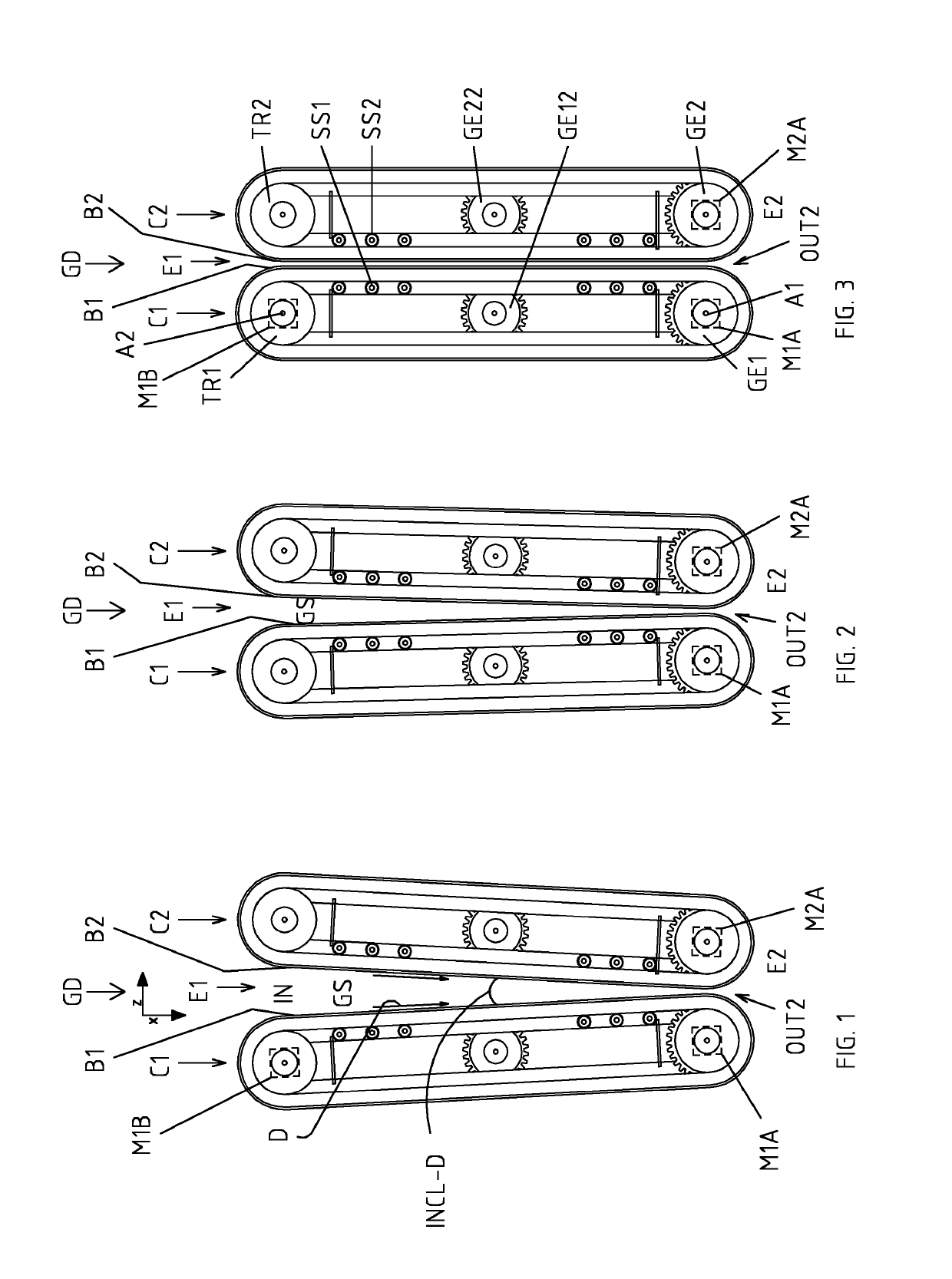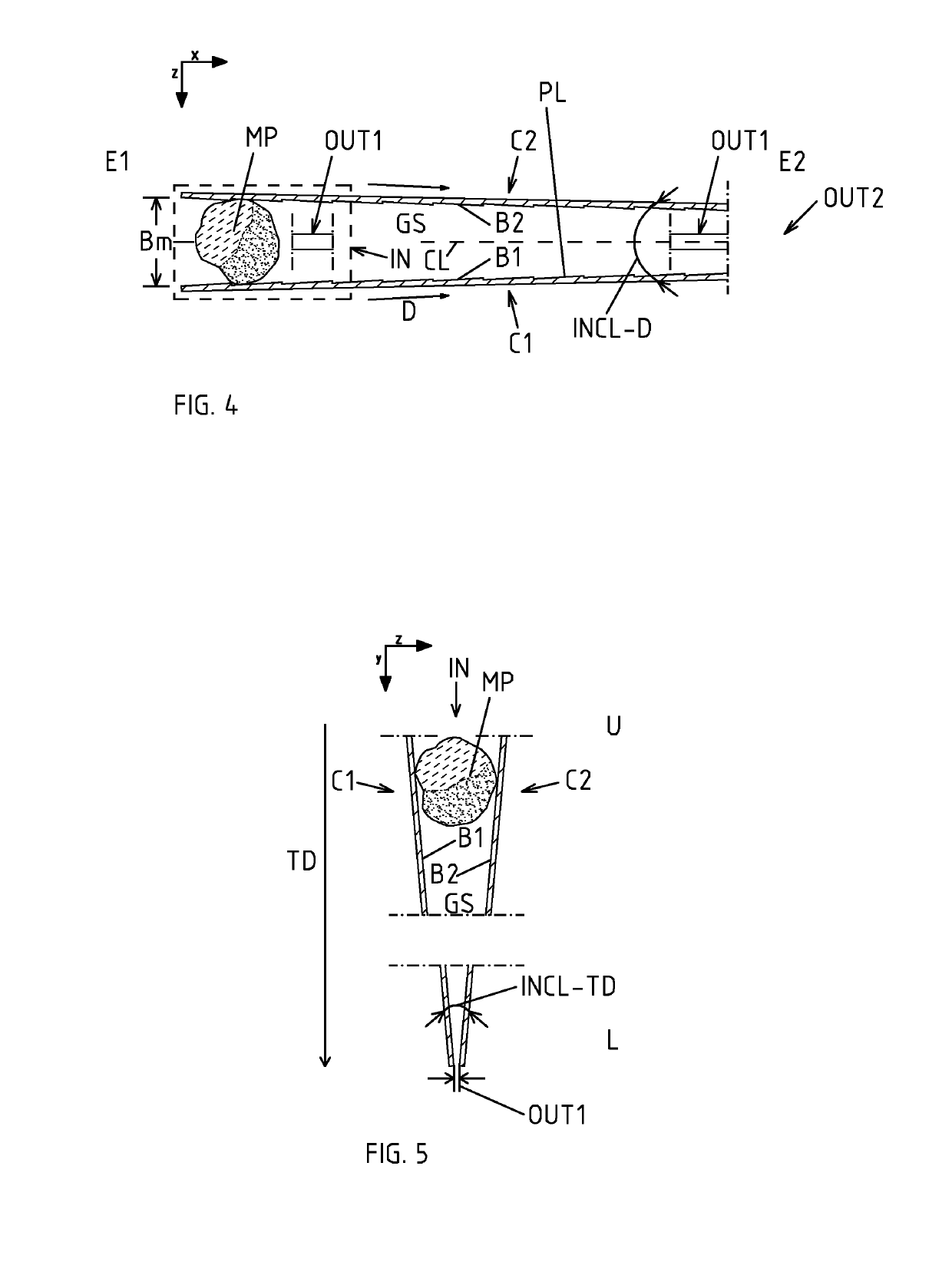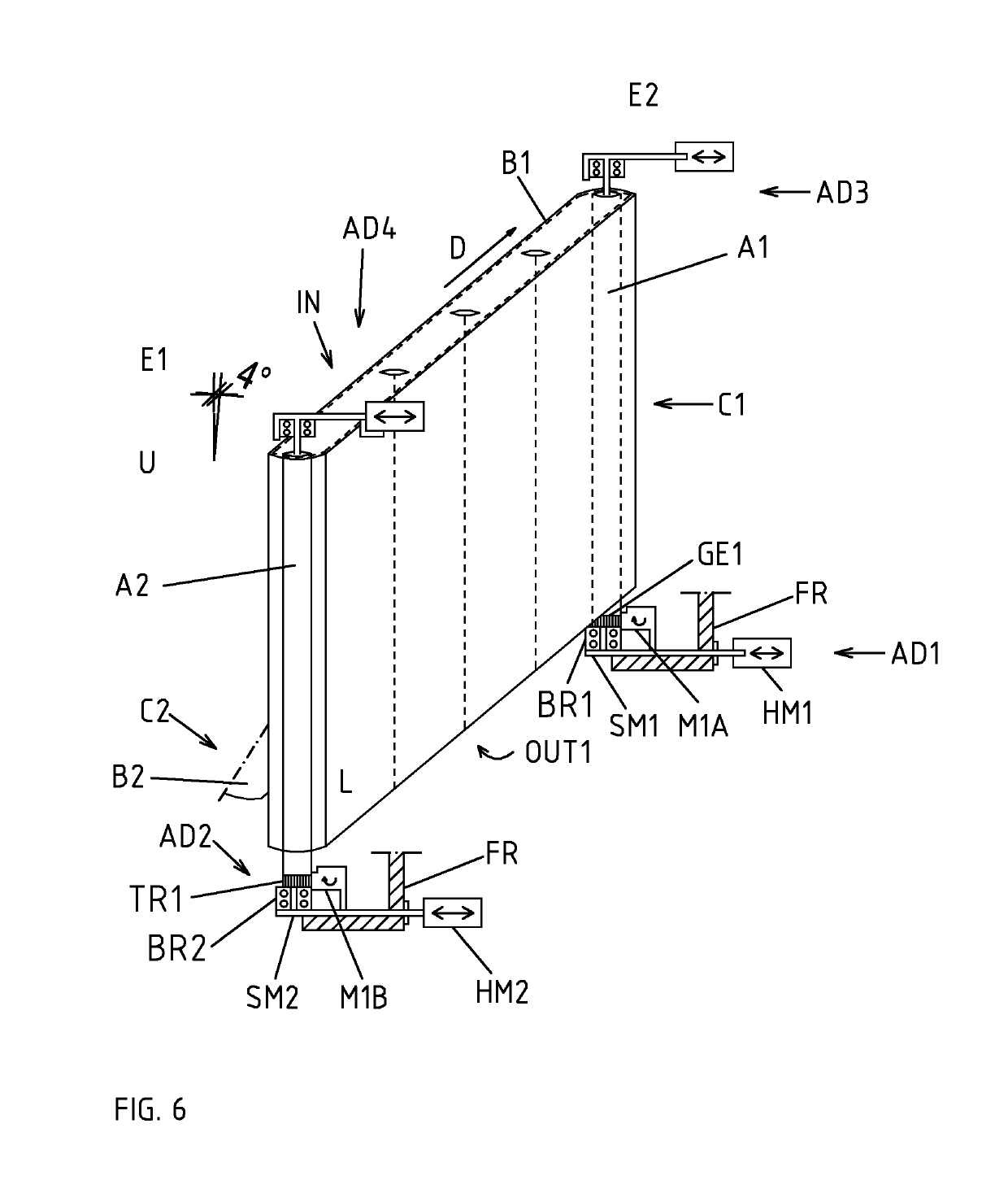Apparatus and method for comminuting of material
- Summary
- Abstract
- Description
- Claims
- Application Information
AI Technical Summary
Benefits of technology
Problems solved by technology
Method used
Image
Examples
Embodiment Construction
[0016]The invention relates to comminuting of material by compression, by way of example in particular to comminuting of elastoplastic material. Minerals, for example, serve as an example of a comminutable, at least partly elastoplastic material. If the material is homogeneous and fully elastic, the stress field formed in the material is distributed according to the location of the compression points and surface area in the material, and the stress field may be calculated relatively accurately based on the bond strength between atoms. In practise, all the comminutable material particles are non-homogeneous and at least slightly plastic, and they typically include a plurality of matter components unevenly distributed in the material and which have discontinuity points and micro-cracks at their boundary surfaces, in particular. In addition to minerals, ceramic material and glass are elastoplastic material.
[0017]The apparatus GD shown in the figures comprises a first conveyor structure...
PUM
 Login to View More
Login to View More Abstract
Description
Claims
Application Information
 Login to View More
Login to View More - R&D
- Intellectual Property
- Life Sciences
- Materials
- Tech Scout
- Unparalleled Data Quality
- Higher Quality Content
- 60% Fewer Hallucinations
Browse by: Latest US Patents, China's latest patents, Technical Efficacy Thesaurus, Application Domain, Technology Topic, Popular Technical Reports.
© 2025 PatSnap. All rights reserved.Legal|Privacy policy|Modern Slavery Act Transparency Statement|Sitemap|About US| Contact US: help@patsnap.com



